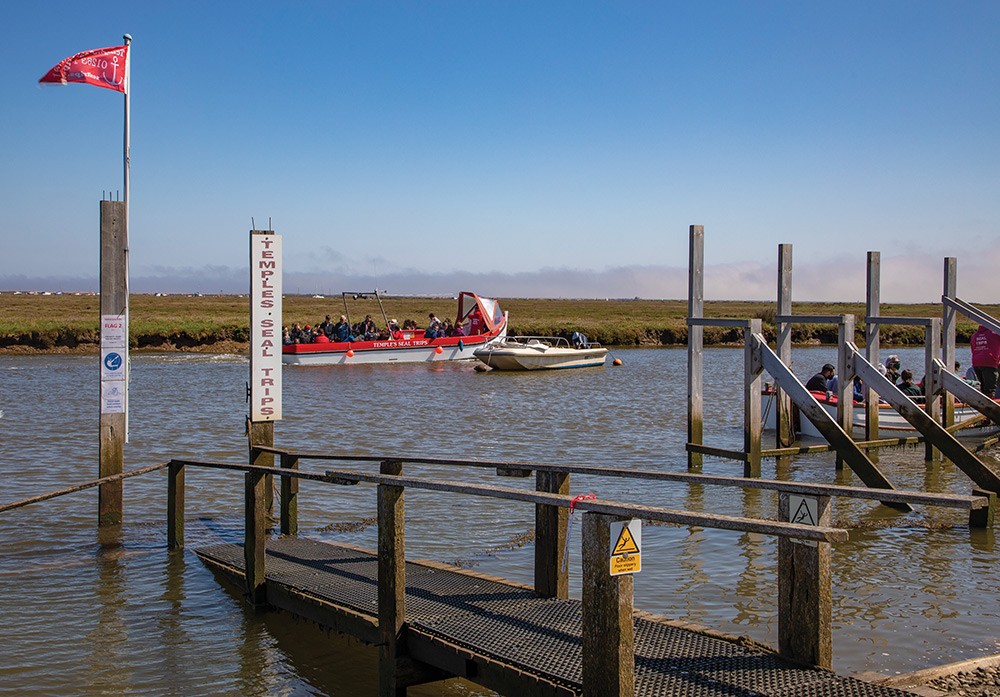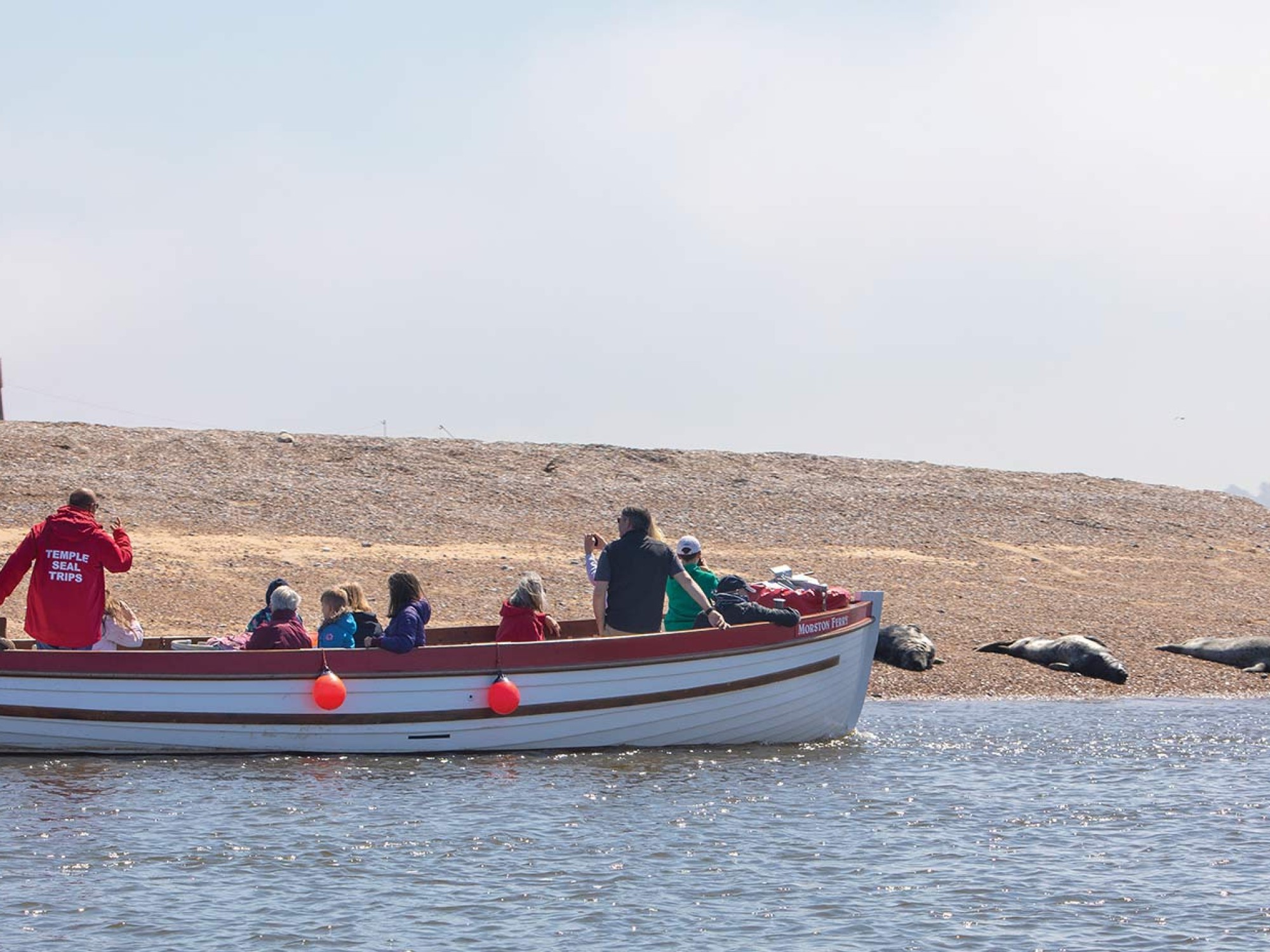
A natural local wonder and a family tradition
Taking a trip around Blakeney Harbour to see the seals is a magical experience, but it’s even more enjoyable when you’re in the company of one of the county’s most colourful characters
Blakeney Harbour is one of the most beautiful spots in Norfolk, and a leisurely tour of its calm waters out to Blakeney Point to see the seal colonies as they arrive to have their pups is one of the most charming activities the county has to offer.
Especially when your skipper is someone as experienced, knowledgeable and friendly as Jim ‘Jimbo’ Temple. It’s tempting to say that he knows Blakeney Harbour like the back of his hand, but if truth be told he probably knows it a lot better than that.
The Temple family has been operating these boat trips for well over 60 years, and to say it’s a family-run business is something of an understatement - because virtually everyone has a role to play, whether that’s as skipper, a crew member, handling bookings and ticket sales, or helping customers board the vessels when they leave Morston Quay - and the family even finds time to run The Anchor gastropub in Morston.
Speaking to Jimbo as we set out, he points outs his young crew member.
“That’s my grandson Alfie,” he says, “but he’s a bit older than I was when I started - I was only nine years old.”
Temples Seal Trips operates three distinctive red-and-white boats. The oldest is the 26ft purpose-built Morston Ferry, and the next addition was the Four Sisters, named after the four daughters (Sally, Rachael, Louise and Elsie) Jimbo and Jane Temple had at the time, and the boat has an interesting story to tell.
“About 25 years ago we were taking a lot of coach parties and there’d usually be about 50 people,” says Jimbo. “We really needed a 50-seater boat to accommodate them all at once, but they were far too expensive.”
As luck would have it Jimbo found himself in Southampton around that time picking up a small boat for somebody else and saw the yard was building hulls for lifeboats. They had a perfectly shallow draught (the water in Blakeney Harbour is rarely more than four feet deep) and would be ideal as the bottom of a passenger boat.
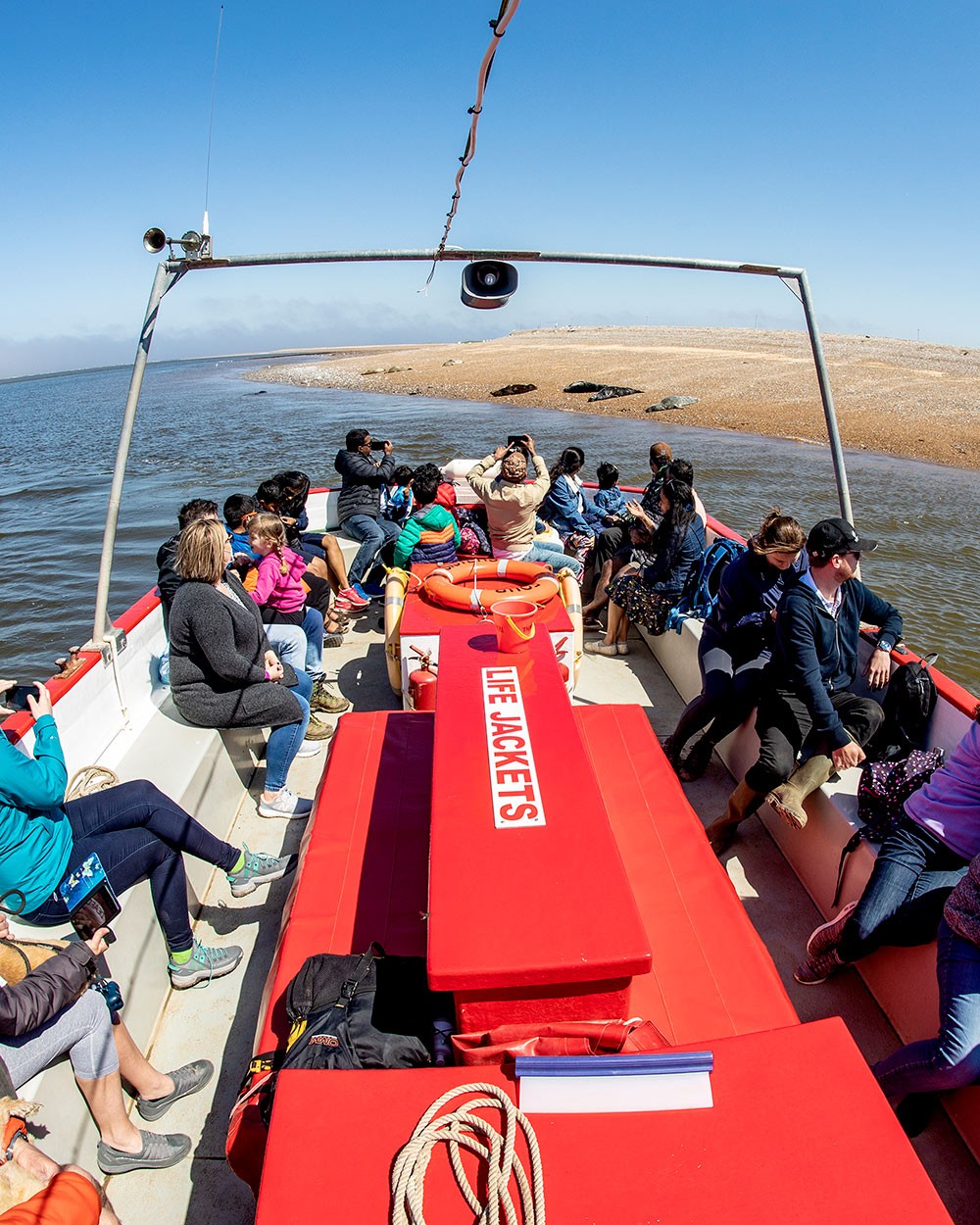
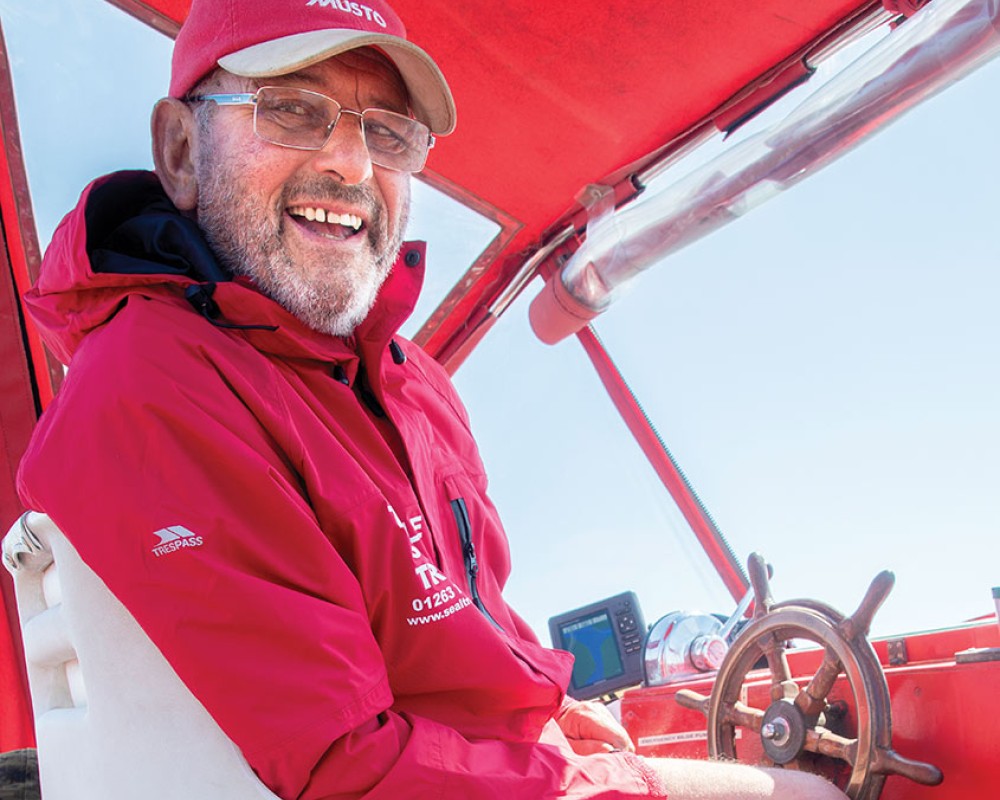
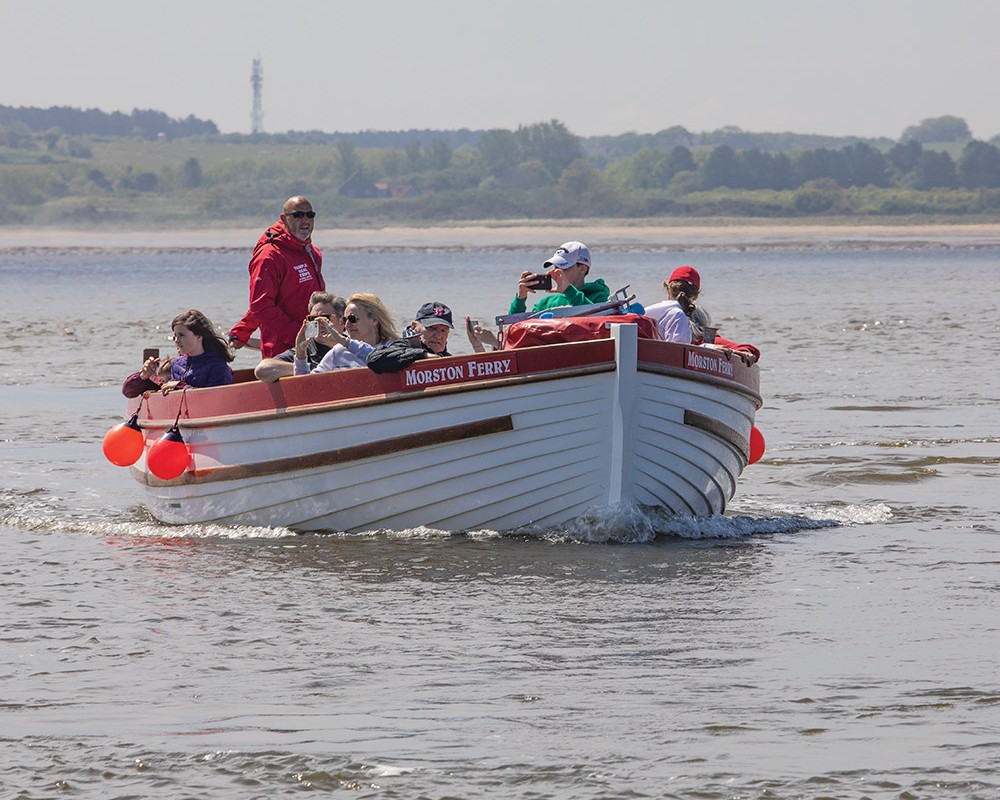
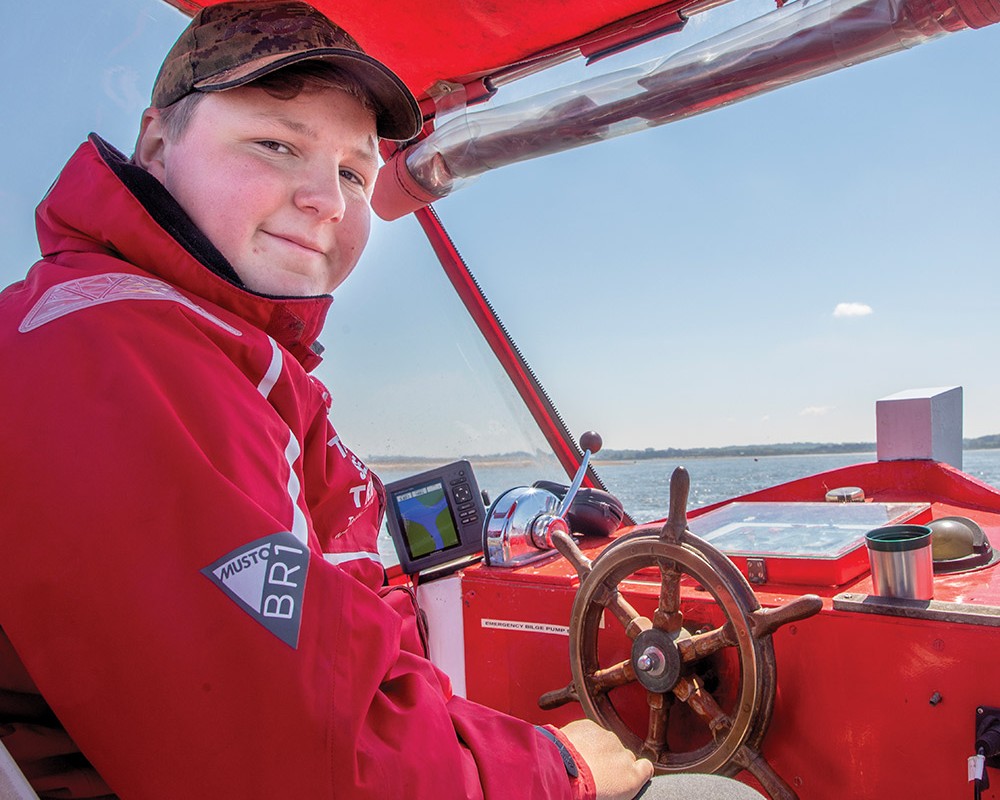
“They told me they were working on a commission for the Royal Navy for 200 vessels,” says Jimbo, “but they’d somehow made one hull too many and it was just laying in the yard upside down. I bought it there and then.”
It cost around £1,000 to be transported to Norfolk and Jim spent the next three years building up the rest of the boat on which we’re currently talking - and he did it outside his house because the family didn’t have a workshop big enough to take her.
The third and final boat is Lily Too, named for Jimbo and Jane’s fifth daughter Lily who was born after the Four Sisters was finished. The 12-seater is used for extra-busy times (there are plenty of those at the moment) but can also be privately chartered for exclusive trips, private parties and business lunches.
By this time we’re passing the old lifeboat station off to our right. The iconic blue and white building was closed in 1935 and is now used by the National Trust as an information centre and ranger accommodation for the surrounding nature reserves.
Naturally, Jimbo knows why the nearest lifeboat station is now five miles away at Wells-Next-the-Sea.
“There’s a process known as longshore drift, which is when the sea moves huge amounts of sand and pebbles along the coast,” says Jimbo. “The harbour has completely changed since I took my first boat out 62 years ago and it’s still changing. So has the way people think about the seals. When I started no one was bothered about them, but now they can’t get enough of them.”
By now the mammals in question are coming into view, basking in the sun on the end of Blakeney Point. Most of them are common seals who’ve come to Norfolk for the summer to have their pups, but Jimbo points out a handful of grey seals - which is slightly unusual since they come to Norfolk to have their young over the winter.
Even more unusual is the reason they’re here at all, since before the mid-1990s there were none - and Blakeney Point is now home to England’s largest grey seal colony.
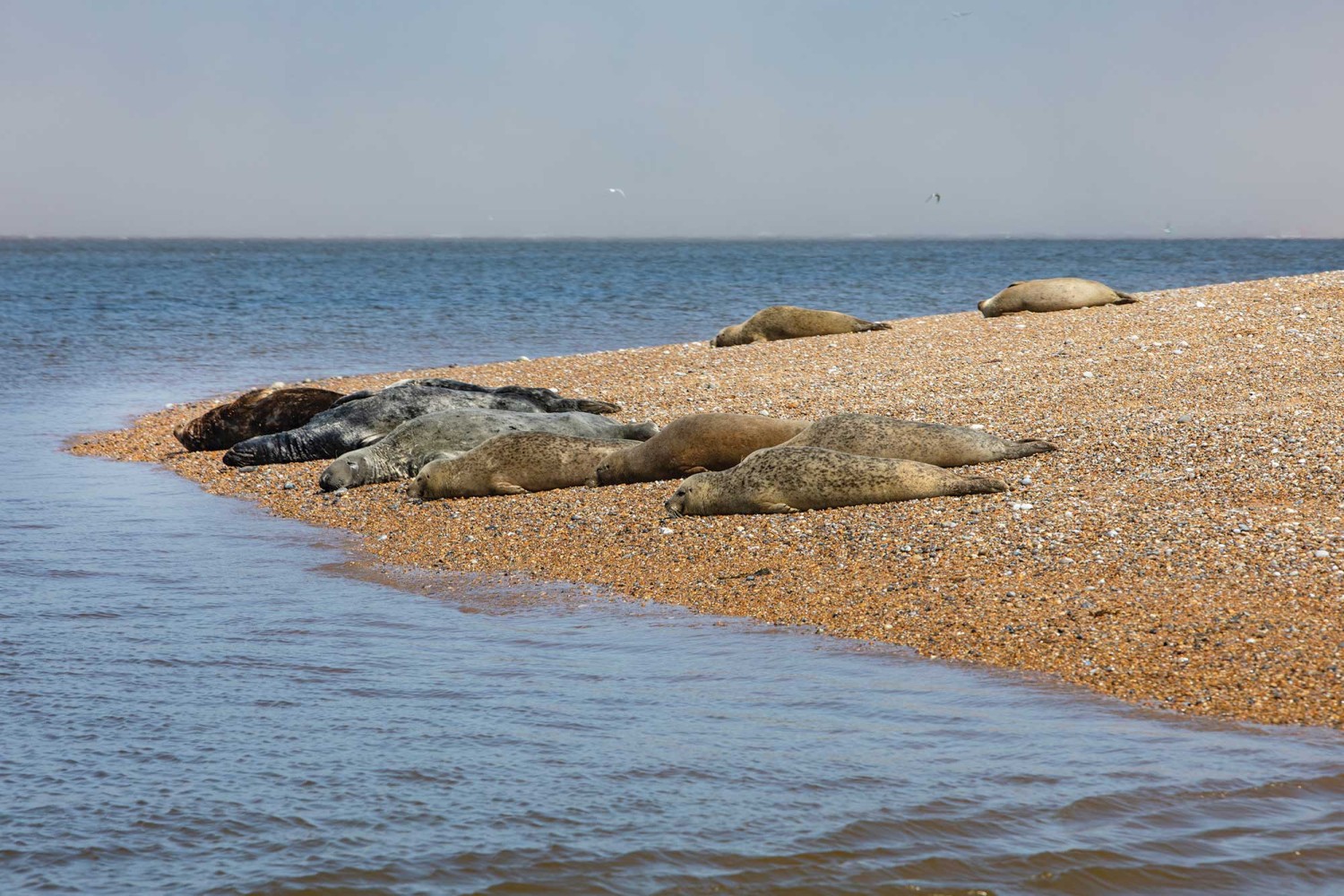
In August 1988 the BBC reported that a mysterious disease killing common seals in the North Sea and Baltic had arrived in England after several dead seals had been found in the seas off East Anglia.
“We had 1,000 common seals here every year but we lost 600 of them in two weeks,” says Jimbo, who helped the National Trust dispose of almost 200 of them. “People all around the country wanted to help, so they started taking sick seals or abandoned pups to their nearest sanctuary.”
The problem was that many of the seemingly-abandoned pups were actually young grey seals, who naturally spend the first few weeks of their lives on the beach.
“In 1988 about 60 ‘abandoned’ young seals were released here,” says Jimbo, “and we didn’t think anything of it for a few years.”
But in September 1993 he can clearly remember seeing three very unusual pups on Blakeney Point.
“They were like little balls of cotton wool and we didn’t know they were grey seals at the time,” he says. “Next year there were 12, the following year 25, the year after that 50 - and last year we had 4,200.”
The arrival of the grey seal had an unexpected benefit for Jimbo and his family, though, since it meant they could extend a summer-only business over the winter as well.
As we head back to Morston Quay on a journey that Jimbo’s made thousands of times over the last 62 years there’s an obvious question - does he still enjoy it?
“I still love it as much as I always have and I wouldn’t miss it for the world,” he says. “My worst fear is not being able to do it anymore, but when that time comes I’ll still find a way to play a part in the family business. It’s in my blood.”
